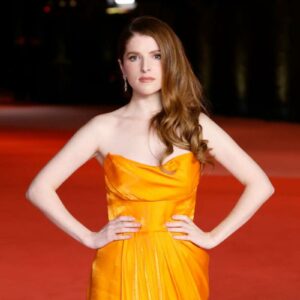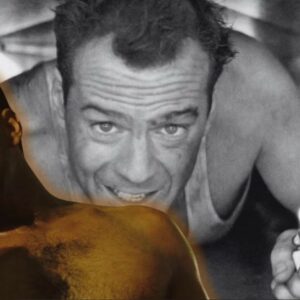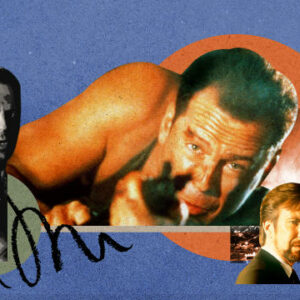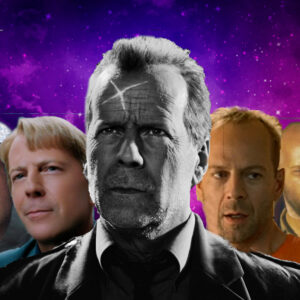Bruce Willis is a name synonymous with on-screen toughness, a persona that has cemented him as one of Hollywood’s most iconic actors. From his early days on television to his blockbuster hits in the film industry, Willis has embodied a variety of characters, each distinct yet united by a common thread of rugged resilience. While his impressive acting skills are undoubtedly a significant factor in his success, there’s an often overlooked aspect that plays an equally crucial role: costume and makeup.
This article explores the essential behind-the-scenes elements that contribute to Bruce Willis’s dynamic on-screen presence, focusing on how costume design and makeup have been instrumental in shaping his diverse characters. By examining specific roles and the meticulous work involved, we’ll uncover the collaborative effort required to bring Willis’s tough-guy image to life.
The Evolution of Bruce Willis’s On-Screen Persona
Bruce Willis’s career began in the 1980s with his breakout role as David Addison in the television series Moonlighting. His charming, quick-witted portrayal of a private detective marked the beginning of his journey as a leading man. However, it was his transition to action films that truly defined his career. Roles in movies like Die Hard (1988) and Pulp Fiction (1994) showcased his range and solidified his tough-guy image.
In Die Hard, Willis’s portrayal of John McClane, a New York City cop fighting terrorists in a Los Angeles skyscraper, became iconic. The character’s everyman heroism, combined with Willis’s distinctive performance, resonated with audiences. McClane’s every scratch, bruise, and tattered clothing contributed to his rugged realism. The role exemplifies how costume and makeup are not just accessories but vital components in character creation.
The Role of Costume in Character Creation
Costume design plays a pivotal role in shaping an actor’s character, especially in action films where the physicality of the role is often as important as the performance itself. For Bruce Willis, the evolution of his on-screen wardrobe has mirrored his characters’ journeys.
Die Hard (1988)
In Die Hard, the simplicity of John McClane’s costume—a white tank top, jeans, and a watch—was not just a choice of practicality but a deliberate design to enhance the character’s vulnerability and resilience. McClane’s tattered clothes, dirty feet, and bruised body tell a story of survival against overwhelming odds. The costume was designed to show the wear and tear of McClane’s ordeal, making his suffering and heroism more palpable to the audience.
The Fifth Element (1997)
In contrast, Luc Besson’s The Fifth Element required a drastically different approach. Willis played Korben Dallas, a former cab driver turned hero. The futuristic setting demanded a costume that was both functional and visually striking. Dallas’s sleek, military-style outfit, complete with high-tech gadgets and accessories, was crucial in establishing the film’s vibrant, sci-fi aesthetic. The costume design team worked to ensure that each element of Dallas’s wardrobe was not only stylish but also practical for the film’s high-octane action sequences.
Sin City (2005)
Sin City presented yet another challenge. Willis’s portrayal of Hartigan, a jaded cop in a gritty, noir-inspired world, required a costume that reflected his character’s hardened past and present desperation. The dark, tailored suit and trench coat were designed to emphasize Hartigan’s role as a tragic hero in a corrupt world. The costume’s texture and color palette were meticulously chosen to match the film’s stylized black-and-white visual scheme.
The Art of Makeup in Enhancing Characters
While costume design sets the stage, makeup brings characters to life by adding depth and realism. For Bruce Willis, makeup has been crucial in portraying characters who endure physical trauma or embody specific archetypes.
Die Hard and Die Hard with a Vengeance (1995)
The physical demands of John McClane’s character in Die Hard required extensive use of makeup to depict injuries realistically. The makeup team created convincing bruises, blood, and dirt to reflect McClane’s grueling battle with terrorists. This attention to detail made McClane’s pain and perseverance more relatable to viewers.
In Die Hard with a Vengeance, the makeup continued to play a role in portraying McClane’s weariness and the toll of his dangerous job. The aging makeup subtly highlighted the passage of time and McClane’s continued struggle against adversity.
The Sixth Sense (1999)
M. Night Shyamalan’s The Sixth Sense saw Willis in a different light, playing Dr. Malcolm Crowe, a child psychologist. The character’s appearance was less about physical wounds and more about subtlety and realism. The makeup was used to enhance Willis’s natural features, giving him a look of professional calmness and emotional depth. The minimalistic approach allowed his performance to shine while maintaining a believable and relatable presence.
Unbreakable (2000)
In Unbreakable, Willis’s portrayal of David Dunn required a different kind of makeup: one that subtly emphasized his character’s superhuman resilience. The makeup team used techniques to enhance the natural strength and endurance of Willis’s appearance, complementing the film’s themes of heroism and vulnerability. The makeup subtly accentuated Willis’s physical presence without overshadowing his performance.
The Collaborative Effort: Costume and Makeup Teams
The creation of Bruce Willis’s on-screen characters involves more than just the actor’s input. It requires a collaborative effort between directors, costume designers, makeup artists, and other behind-the-scenes professionals. Each team member contributes their expertise to ensure that the final portrayal aligns with the director’s vision and the character’s narrative arc.
The Role of the Director
Directors play a crucial role in defining the character’s look and feel. For example, in The Fifth Element, Luc Besson’s vision for a futuristic world influenced the design of Korben Dallas’s costume. Similarly, in Sin City, Robert Rodriguez’s distinctive visual style guided the costume and makeup teams in creating a noir-inspired look.
Costume Designers
Costume designers work closely with actors to develop outfits that reflect the character’s personality and circumstances. In Die Hard, the decision to have John McClane in a simple, everyday outfit was intended to emphasize his vulnerability and relatability. The choice of fabric, fit, and accessories all contributed to creating a believable hero who could withstand intense situations.
Makeup Artists
Makeup artists are responsible for applying the finishing touches that enhance the character’s appearance. Whether it’s creating realistic injuries for an action scene or applying subtle touches for dramatic roles, their work is crucial in making characters believable. For instance, the makeup team’s work on John McClane’s injuries in Die Hard played a significant role in conveying his suffering and resilience.
The Impact of Costume and Makeup on Audience Perception
Costume and makeup are more than just physical attributes; they shape audience perception and emotional response. For Bruce Willis’s characters, the visual elements contribute to how viewers connect with his roles. A well-designed costume or realistic makeup can make a character more relatable, evoke empathy, and enhance the overall cinematic experience.
Die Hard and the Everyman Hero
John McClane’s tattered clothes and visible injuries in Die Hard make him an everyman hero. The realistic portrayal of his suffering and endurance draws viewers into his struggle, making his triumphs and sacrifices more impactful. The costume and makeup work together to create a character who feels genuine and relatable, enhancing the film’s emotional resonance.
The Fifth Element and Futuristic Fantasy
In The Fifth Element, Korben Dallas’s futuristic costume helps immerse viewers in a vibrant, otherworldly setting. The sleek design and high-tech accessories not only fit the film’s aesthetic but also contribute to the character’s role as a futuristic hero. The costume design helps establish the film’s unique world and enhances the audience’s experience.
Sin City and Noir Inspiration
Sin City utilizes costume and makeup to reflect its noir-inspired style. Hartigan’s dark, tailored suit and the film’s monochromatic palette contribute to its gritty, stylized atmosphere. The character’s appearance aligns with the film’s visual storytelling, reinforcing the noir genre’s thematic elements.
Conclusion: The Unsung Heroes Behind Bruce Willis’s Tough-Guy Image
Bruce Willis’s tough-guy image is a result of a multifaceted collaboration that goes beyond his acting prowess. The meticulous work of costume designers and makeup artists plays a crucial role in bringing his characters to life. From the everyday realism of John McClane’s injuries to the futuristic flair of Korben Dallas’s outfit, these elements are integral to creating memorable and impactful on-screen personas.
The next time you watch a Bruce Willis film, take a moment to appreciate the unseen efforts that contribute to his powerful performances. The synergy of costume and makeup, combined with Willis’s exceptional talent, creates characters that are not only tough but also deeply engaging and unforgettable.





